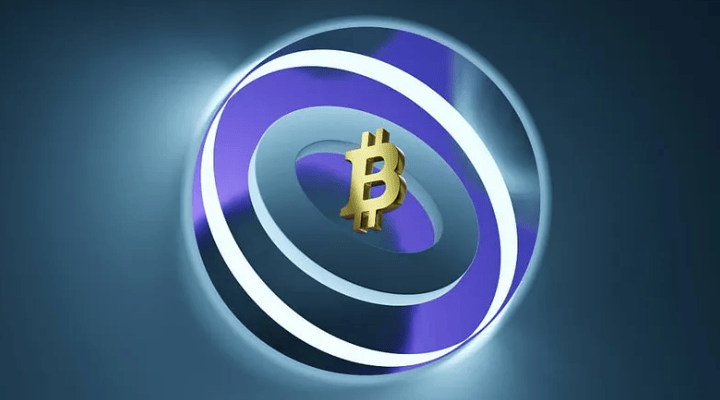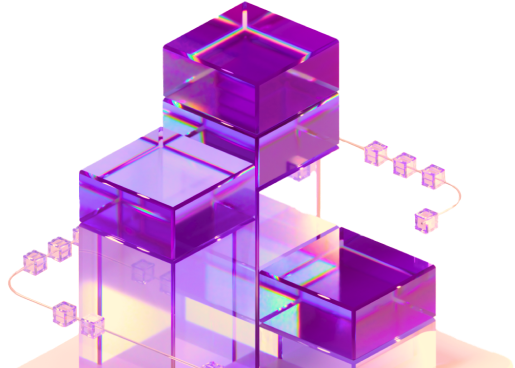Have you ever felt like the world demands you choose one side over another instead of embracing multiple perspectives?
We’re reluctant to trudge through the thick mud of learning the “new thing” or starting from scratch, so we pick a side.
And we stick to it.
In Crypto, there’s this binary mindset and clannish behaviour where people feel compelled to pick a team.
Raoul Pal, who I’ve described many times as a macroeconomic wizard because of his ability to recognise consumer behaviour, will surprise you with his Cryptocurrency portfolio.
The renowned investor turned cryptocurrency bull tells you precisely how he views the age-old question of Bitcoin vs Ethereum.
It’s not even a close call on which side of the fence he sits.
In his recent interview on Crypto Banter, Pal discussed why, despite the strong momentum of Bitcoin and the highly bullish catalyst of BlackRock’s ETF application, he remains 100% convinced that Ethereum will outperform Bitcoin by 4 to 5 times in the next cycle.
Interviewer Question: “You can only back one horse. You can only back either Bitcoin or Ethereum. Your holding period is two years. Which one are you backing?”
Answer: Raoul Pal — Source
“Same answer on the very long-term time horizon, my friend. I don’t change things around.
And my thesis is when I look at the monthly chart on a log scale of the Bitcoin/Ethereum cross, it reveals a big wedge pattern.
I know what drives the ETH/Bitcoin cross — it’s driven by the business cycle and where you are in the liquidity cycle.
We’re at the turning point where we should see ETH starting to outperform over the next couple of months massively.
I’ve written about this in several Global Macro Investor and Real Vision Pro Macro articles. So, it’s just a matter of time to me.”
If You Understood the ETH to BTC Ratio, You’d See the Upside Pal Is Talking About.
Traders and investors commonly use the ETH to BTC ratio to assess the relative performance and value of Ethereum compared to Bitcoin. It helps them determine whether Ethereum outperforms or underperforms Bitcoin in the market.
It refers to the exchange rate between Ethereum (ETH) and Bitcoin (BTC) and represents the value of one Cryptocurrency in terms of the other. The ratio is calculated by dividing the price of Ethereum by the price of Bitcoin.
For example, if the price of Ethereum is $2,000 and the price of Bitcoin is $40,000, the ETH to BTC ratio would be 0.05 (2000/40000). It means that 1 Ethereum is equivalent to 0.05 Bitcoin.
According to Pal, for the ETH/BTC pair to confirm a breakout, it must surpass the resistance level at approximately 0.077 BTC ($2,115). As of writing, the ETH/BTC pair is trading at 0.0639 BTC ($1,755).
As for Ethereum’s fundamentals, Pal believes the leading smart contract platform’s total addressable market is much larger than Bitcoin’s.
Raoul Pal — Source
“Ethereum is a broader basis architectural protocol of which we can build more stuff on top of.
Bitcoin doesn’t do that. It has a different use case. So it’s unlikely to be as big.
Is the Internet worth more than gold? Yes, simple as that, and that’s the argument here.
There’s the chart of Ethereum versus Bitcoin. It shows one hell of a wedge.
If that happens, we should see ETH doing 4x or 5x more than Bitcoin in the next run. And ETH probably won’t be the best-performing Crypto either.”
In trading, a wedge on a chart typically signifies a period of consolidation or indecision in the market.
A technical pattern forms when an asset’s price moves closer in a trendline, narrowing the range between higher lows and lower highs.
The wedge pattern suggests that buying and selling pressures are becoming more balanced, and it often precedes a significant breakout or trend reversal.
People like Pal closely monitor wedges and say that with Ethereum’s market cap and increasing ratio to Bitcoin, it will outperform Bitcoin in the next cycle.
The blue lines on the ETH to BTC chart signify a consolidation period with a wedge shape. It indicates a potential breakout.
BlackRock Backs Bitcoin ETF and Bitcoin Outperforms Ethereum in 2023: Challenging Pal’s View
Raoul Pal has a logical point: when a new investment, i.e. BlackRocks ETF, flows into the market, it’ll have a trickle-down effect.
The influx of funds into these assets creates increased demand. As prices rise, it generates a positive sentiment among investors, leading to broader confidence in the market, which spills over to other assets.
The BlackRock ETF, a fancy word for a stock representing a basket of assets, will be a net positive for the entire market.
Raoul Pal — Source
“How this works is pretty straightforward. Let’s say BlackRock’s ETF money comes into the space. Money gets recycled, and it flows into other stuff.
These things (ETH) have a smaller market cap and are less liquid, impacting the price significantly.
The same happens in emerging markets like stocks, credits, and junk bonds. It’s always the same.
So, as you move out of U.S. treasuries into bonds, into Emerging Market bonds, the least liquid ones rally the most.
So, the bottom line, ETH still has a while to go.
Another few months before, we start to see the pattern base out, and this reverts. That’s my best guess, and again, I’m so long-term.
I’m still 85% into ETH (portfolio), 10% in Solana and a small amount of Bitcoin.
I don’t own much Bitcoin.”
Final Thoughts
What people buy is a far better signal of what they’re bullish about.
Pal is all in on Ethereum.
His reasons make perfect sense.
Ethereum is a smaller-cap Crypto with built-in network effects on which you can build applications. The opportunity for growth is exponential, as it is with Bitcoin.
Using Pal’s logic, Ethereum’s market cap is $230 billion, and Bitcoins is $600 billion. Those respective market caps need to double in size to double your money. Simple and clear-cut.
Pal’s view is Ethereum doesn’t need to do as much as Bitcoin to increase because it’s smaller. Any institutional capital from a Bitcoin ETF will find its way to Ethereum anyway.
He may well be right.
But here’s the thing.
It brings me to the main point I was emphasising from the beginning.
Don’t be in the camp of choosing between either or.
It’s practical to have both.

 English
English
 Deutch
Deutch
 Espanol
Espanol
 Francais
Francais
 Portugues
Portugues
 日本
日本
 한국인
한국인
 Türk
Türk
 Русский
Русский
 Tiếng Việt
Tiếng Việt

